 1 / 20
1 / 20

 1 / 20
1 / 20

Şahin Paksoy’s love for collecting that started in his third year at the Department of Fine Arts, enabled him to touch thousands of artworks. He had a passion for objects made of terracotta, for sufism and calligraphy, for carpets and rugs, for under glass painting and for objects related to Turkish coffee culture and in these fields, he made up large collections.
You were born in Adana, Ceyhan. How did this geography affect you?
Adana and its surrounding region are very interesting. As my family was mostly engaged in agriculture my childhood was in farm, within the nature. And the surrounding region where we lived was full of history. Some places near Ceyhan such as Yılankale, Misis, Ayas, Yumurtalık are historical sites with magnificent beauties. This is where I was grown up, I used to play football within archeological sites.
So, does that mean that this geography inspired you for collecting?
Certainly, this is a factor, but I do not think that one can be a collector later in his/her life. I guess I was born as a collector. As I was living in such a historical place (Ceyhan), early on my ages I headed for history.
Is there any other collector in your family, in earlier generations?
My mother’s father, Hulusi Bey, was collecting poems and melodies of Karacaoğlan; and he was copying these in a notebook. He used to bring together lyric poem (gazel) performers and he set up some meetings where these performers were reciting lyric poems in the company of drum and clarion and there he was copying those poems.
Did this influence you when you started collecting?
This was very useful in terms of nurturing myself from my own geography. I did not collect anything that Anatolian people did not touch, that did not possess tradition and melody; that did not cultivate within this tradition. This is the case for all my collections. In my collection named as Turkish Coffee Objects I did not purchase anything that was made by someone other than Anatolian masters. This holds also for my underglaze collection. Always I looked at how local artists interpreted and explored modern art.
I know that you have a special passion for pigeons. How did this direct you to collectorship?
In the city, where I was grown up, people used to feed pigeons. It was believed that feeding pigeons was something sacred. Still, in half of the houses of Adana, people feed pigeons. I also had an interest from my early ages onwards. I chased after a race, I made research on its genes. While I was searching for relatives such as grandfathers or sisters of this bird I ended up in a deep enquiry. In the end, I found a very special gene and still am feeding pigeons from this gene. My family look after them in our family farm at Adana, now I am not able to go there frequently as I used to do in the past. Nowadays, everyone would like to feed this gene. Someone from London, who is interested in birds, called me and told me “I will send you an open cheque and please give me one offspring of this bird.” I sent without any cost. Another time, they called me from Riyad and told “I am very interested in this, until today I spent excessively but everyone is talking about your bird, no need to talk about money. Could you please send me one male and one female?” and I sent them a couple.
After pigeons, how did your collectorship begin? How did you find your way?
I began with archeological objects. When I was in the university I found out that there was a flea market at Topkapı, the year was 1974. I tremendously enjoyed going there on Sunday mornings. I was spending all my money there and then, walking back to my home. But my mind was always pushing me towards archeology. Thus, I began to go to Çınaraltı, near Beyazıt. Suddenly, I found myself collecting archeological objects. Of course, when I was at Adana, I was finding out artworks more easily. Then, we also made my sister Gönül Paksoy a collector. In these times, I had changed my department and transferred to the Ceramics. Thus, terracotta objects became more attractive for us. In fact, there was the difficulty of finding artworks made of stone or bronze. This journey that began when I was in my third year at the Fine Arts Academy brought me here.
What kind of a journey was this? Was is how you expected? Or did it evolve into some other directions?
I began to see the depth of those objects. For example, behind the Ottoman calligraphy I saw the Seljukid art, and while asking what was behind this I moved along the Sumerians. As I investigated, I became deeper and my interest further enriched. I understood that those things that had a past life are more genuine.
Did your calligraphy and rug collections also start during your university years?
First archeological works, then calligraphy and then rug collections came. This moved step by step. My sister Gönül Paksoy was very influential in directing me toward carpets and rugs. She was an expert of natural pigments and she obtained her doctoral degree within this field. She was collecting carpets and making researches on their pigments. I was affected by her and I was able to see the depth thanks to her. Gönül did not set up a collection but I established an amazing collection. 250 pieces from my carpet and rug collections were once stolen. This theft disappointed me and I stopped purchasing rugs and carpets. Sometimes, I think of some of my stolen rugs and this overwhelms me. Sometimes I see some of these in European catalogs and I say myself, “this was mine”.
What did you collect after rugs?
After rugs, underglaze artworks came in. When I explored deeply I began to cultivate an interest for calligraphy and there I found out the power of Ottoman art of calligraphy.
You see the art, harmony and balance in all artworks that you collected. And, I think, you go after this thrive. Throughout your journey as a collector what was the main feeling that led you toward collecting the best pieces?
I never run after the signature. Some collectors of Ottoman Art of Calligraphy run after signature works or they collect “fine” pieces. I never chased after purchasing firm and unworn artworks. I also do not prefer to collect those objects with a deduction. Certainly, deduction and finding something proper are also signs of mastership. But my goal was about this calligrapher’s excitement not about collecting his/her best pieces. Calligraphers might have also made some poor works, just like the artists. What excites me is the power of the artwork. This power suddenly calls in the people. You see an amazing balance and energy.
How did you begin collecting under glass works of art?
This collection is also related to fact that I, myself, am an artist. I loved folk painting. The people had to use writing when painting. Even though Islam did not have such a dogma, a misunderstanding related to the sayings of Islam led a necessity, and the people began to paint with the writing. Local artists, probably, found the under glass painting easier thus they painted on glass. Whilst writing, they painted in shape of animals, ships, and mosques. To me it was very interesting to see that they preferred to paint mosques through the art of writing to prevent themselves to commit a sin. This is how I began and I can say that I own one of the most special underglaze collections in Turkey.
Are you still collecting?
Not now, because those underglaze works that appeal to me are now very expensive. We used to purchase at modest prices, as we were among the first to realize. And in time, some of my pieces were broken, and I get them repaired. As you know in underglaze works of arts, only a few artists mark a signature. But still, if an unusual work of art comes up I buy it. There are a few artists, I know their works, their materials, their way of writing; I collect their pieces. And this only makes up two artists.
Are they any collections in the world that you are fond of?
Khalili collection is an amazing collection of Islamic Art. In this collection there are some pieces that no other museum possesses. Some years ago, they opened up an exhibition related to the Kaaba. A friend of mine, who is also a collector, visited the museum in the company of Prof. Nasır David Khalili and he liked it very much. There, he saw a seal used at Kaaba, Nasır Khalili told him that “This seal is one of the most precious pieces in my collection.” My friend then came to see me and told me about this incidence, and I brought him one seal he said “yes, but that one at Khalili collection was slightly bigger than this one.” Then, I brought another one he said “This one is more beautiful than the one at the Khalili collection.” Being a collector in Turkey is difficult because in other countries the state supports collectors. The system recognizes them, enables them to exhibit their collections, gives them places for exhibition and supports them.
I never chased after purchasing firm and unworn artworks. My goal was about this calligrapher’s excitement not about collecting his/her best pieces. Calligraphers might have also made some poor works, just like the artists. What excites me is the power of the artwork.
How did you start your Turkish Coffee Culture collection? How did your other collections bring you together with this collection?
When I was collecting pieces related to Mevlevi Sufi order, pieces related to the coffee were also becoming a part of the collection. No one knows but within the Sufi culture, coffee has an important place. I have begun to collect objects such as large stone or wooden mortars used in dervish lodges, Sufi coffee pots, and a grinding device with a spiked ball of iron. Thus, I began collecting objects related to coffee and used in Sufi culture. Then, something took my attention. Greek merchants were purchasing objects related to Turkish coffee and trading them worldwide as if these were objects of Greek coffee. These people, who lived under Ottomans for about 350 years and learned coffee from the Ottomans, were taking it under their possession. Especially they were collecting coffee boxes. I am collecting, specifically boxes used by Sufi orders. In order to prevent the migration of these objects to Greece, I began collecting any objects related to Turkish coffee. People heard that “Şahin Paksoy is collecting objects related to Turkish coffee” some said “a crazy man is collecting.” Craftsmen working in Anatolia started to call me, some said me that “God may be pleased of you, thanks to you our poor pieces are now making money.” Like this I collected more than 9000 objects for my Turkish Coffee Culture collection. Here you see only a small amount, whenever the museum will be opened you will see many more.
I know that you are dreaming of having a museum at Büyükada. What kind of a museum are you envisioning?
It is not possible to exhibit all these 9000 pieces. I am thinking of selecting 5000-6000 pieces among these, which are rarely seen anywhere else, and exhibiting them in the museum. I also would like to have a coffee house within the museum. But certainly, this will not be an ethnic show off. I am dreaming of somewhere that will represent today’s taste, for example the clothes may be designed by Gönül Paksoy, and this place will amaze everyone and will project a thousand-year culture. I thought everything related to the service-givers, tables, the service. Coffee will be roasted in the middle in wood fire, women will freshly grind the coffee and then they will cool it before making. With my siblings, we desire that coffee will be consumed as a ritual. Anyone who buys a ticket, will both visit the museum and participate in this ritual. After we set up the coffee house we are thinking to establish a brand. Its name will be “Turkish Coffee Museum’s Coffee” and the product will be sold in pockets. And we will make reproductions of some pieces from the collection. For example, Turkish coffee cups have some forms that were designed through the inspiration coming from Hittites and Sumerians, to Saljukids and Byzantine Empire. Our goal is not simply to make and sell a coffee cup. Without deviating from the tradition, we may also include today’s taste and then we can sell it.
Do you want to perpetuate the Turkish Coffee Culture?
Yes, hundred percent. We would like to create everything within the smell of coffee. Indeed, it is a prerequisite that the design studio will also be located within the museum. We would like to emphasize that this coffee belongs to Turkish people. In this journey that began with my anger to the phrase “Greek coffee” this museum will be the final point.
When it is said Turkish coffee, many people think of coffee cups only. But your collection is much beyond these objects. Are grinding devices used by hand, cooling objects, coffee boxes stand apart in your collection?
Women often like coffee cups, as they make coffee with coffee pots they are much related to cups. But there are many more details behind the coffee. When someone knows about roasting, he/she begins to collect things related to it. When you see the ritual of grinding, you look at grinders with a different eye. Cooling devices are like sculptures. There are some coffee boxes that might amaze someone. Those who claim to be designers would never speak again if they see these objects. Whilst using the coffee boxes they made incredible examples exhibiting the representation of vertical and horizontal architecture, if you see them you would be very surprised. Today, many of the designers do not know about these, they do not want to look at the tradition. For example, women sit down grinders with a seat and as they grind coffee, they chat. This is why they are referred to as grinders with a seat.
A collector should have love, which means that you need to desire to obtain this artwork, to see it, and to live with it.
When setting up this collection, the story of some pieces might have been different. Do you remember some of such interesting stories?
Being creative is always important. Some masters produced pieces while moving ahead from the tradition, these are unique works of art. You also see the tradition in these pieces, they are traditional in all their aspects. But they stamped their individual mark on it so that while blending the tradition they wanted to show their peculiarity. These kinds of works of art are very special for me. During these periods, there was not a concept such as the modern art, but to me these truly refer to the modern art. And, especially on cooling devices I see hand writing. One sees one male’s and female’s names. I assume that when people were going to the house of bride to ask for the permission of the father for the marriage, they were bringing a set of objects and the bride to be was preparing coffee with these objects. I also saw that names were written on coffee pots. Under the pot, one sees two names, one female, one male. I think this might have also been related to this ritual.
Is there anything special in the history related to Turkish coffee that specifically took your attention?
We are the first to roast coffee. Turks gave it today’s color. They give this smell through roasting. Thanks to the roasting we can sense the smell of coffee. Because of this, roasting devices have a special place in my collection. And large stone or wooden mortars take my attention. They helped me a lot in my understanding process of the form, they trained my eyes, I can say. Thus, I started collecting them, and I have approximately 1000 mortars. Each one is peculiar. Some designs stand apart in some regions, for example around Tokat region there is a specific design. In Konya, for example, mortars are different, as they carry the influence of Saljukid art. There are some masters that did not constrain themselves with tradition but went beyond it.
You truly love drinking coffee and the ritual. But nowadays, there are only a number of places where one can drink gook coffee. Where do you go for drinking good coffee?
Often, I drink the coffee made by Kımet Hanım, who is working for us (laughing). I love the coffee made by my sister Gönül. I also love the one prepared at our home at Adana because my sisters roast the coffee and grind it. Even if it is grinded in a machine, I make shopping from Nuri Toplar at Eminönü, which is located 50 meters far away from the queue in front of Kuru Kahveci Mehmed Efendi. Only Nuri Toplar roast the coffee in wood fire, hence its taste is different. And at Fatih, near the fire brigade, there is a shop named as Sade, I like drinking coffee there.
What is the indispensable characteristic of a collector?
First of all, love, which means that you need to desire to obtain this artwork, to see it, and to live with it. This (artwork) should be very precious for you. And you should not do this because of your neighbor. Each person should be a collector according to his/her own characteristics. If you like painting, and painting is the thing that inspires you most, you will collect painting. If this is calligraphy, you need to inclined for calligraphy. If you say “Şahin Paksoy is collecting objects related to the Turkish coffee, then this should be very important and I should also collect,” this would be worthless. Then, in the future your offspring will either throw them out of the house or give them to someone else. I say, for this, love is the prerequisite. Women are happy for collecting coffee cups, then they should do it. And, sometimes saying “I have numbers of these objects,” gives pleasure to some collectors. I do not criticize them. I also say that I have 9000, 10000 pieces that make up my Turkish Coffee Culture Collection. I do not say it for praising myself, rather I try to explain how crazy I am.
We would like to establish a Turkish Coffee Museum at Büyükada. I am thinking to choose and exhibit some of the rare pieces, which make up 5,000-6,000 objects, in this museum.
What other characteristics are important for you?
First you need to be curious and then you need to be patriot, like us. It is important to approach these works of arts as (cultural) fortunes of Turkey. While they stand still in front of you, someone else can come and take them abroad. And, future generations cannot see these objects. If these cooling devices and pots had been taken away, we would not be able to see them. We would not be able to comprehend what our ancestors did.
What would you suggest to those who begin collecting?
They should buy Şahin Paksoy’s paintings and sculptures (laughing). First of all, I would suggest them to train themselves, to read and to make research. Also, it is very important to meet collectors and having conversation with them. If he/she would like to be a collector, this means that he/she has a love, a passion inside. But, due to the lack of knowledge, they might ask “what should I collect.” During the learning process, one should buy things that would not later harm (them) a lot. Those who would like to be art collectors, more professionally, they need to see a lot, make researches a lot, they need to meet artists and chat with them, and they need to visit studios of artists.
What was your biggest mistake as a collector?
To begin collecting with archeological artworks, I might have begun with something else. In fact, I sold out some very significant paintings for purchasing archeological pieces. During the time when old paintings were worthless, we were among the first to believe that one day these classics will make a fortune. In those days, we have very significant exhibitions on classical painting, people were laughing at us. No one was purchasing these paintings, you might even find some even in flea market. When one day I went to a real estate agency to look for a house, I bought Nazmi Ziya and Hoca Ali Rıza. They were hung on the wall, they were renting the house with these paintings.
Is there a new collection that you have in mind, afterwards? Or another collection that you would like to expand?
Well, I would like to expand all of them, but from now on I do not think that my budget would allow me to do. Now, you need to be rich to be a collector, but if you are rich you cannot begin like I did. I had many days walking back to my house at Teşvikiye as I had spent all my money on old things at flea market. When you see them, you say yourself that I have to buy these. For this, if you are rich, you cannot be directed to this direction.
A last question: you would like to open up a Turkish Coffee Culture Museum and Terracotta Museum. Apart from these, how do you plan to exhibit your collection and to whom are you planning to give them?
We established a family foundation named as Paksoy Culture, Arts, and Museum Foundation. Still, we are on the inquiry process. I will establish Turkish Coffee Culture Museum with my own facilities but I may also donate it to the foundation. Future generations (in our family) will make it work, if they can. We approach those collected objects as we saved them. Unfortunately, there are many artworks they went to the rubbish, burned in fire, thrown away. Especially, in the field of under glass I met many people who said that “we had it, but went to the rubbish.” For this, I think we were able to save some of these pieces.
This interview is conducted by Emel Erden on behalf of Art50.net for TEB Private.



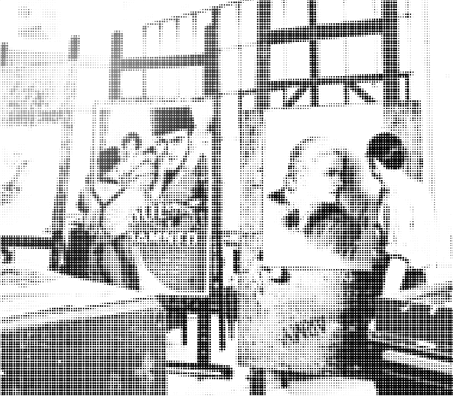



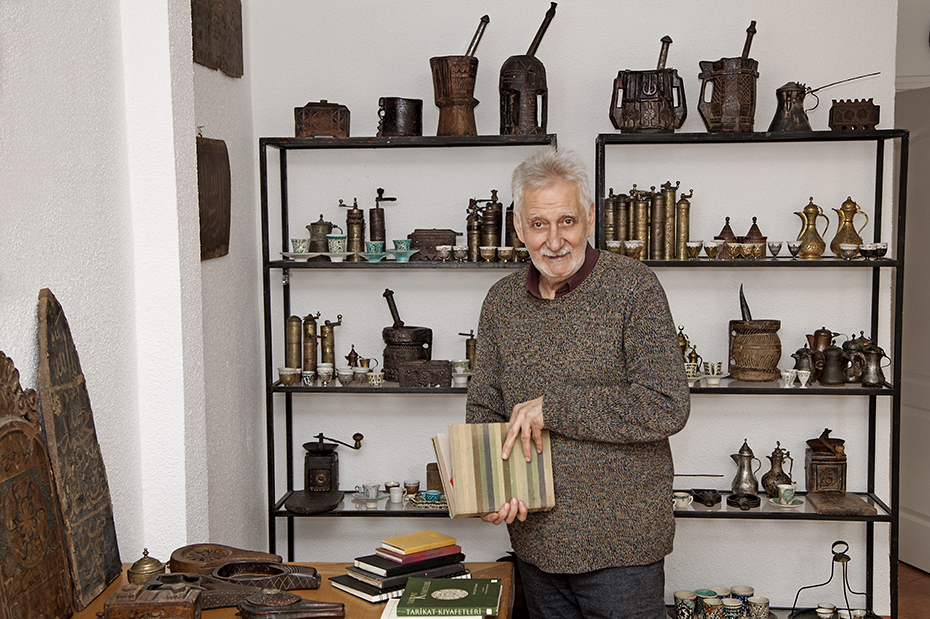
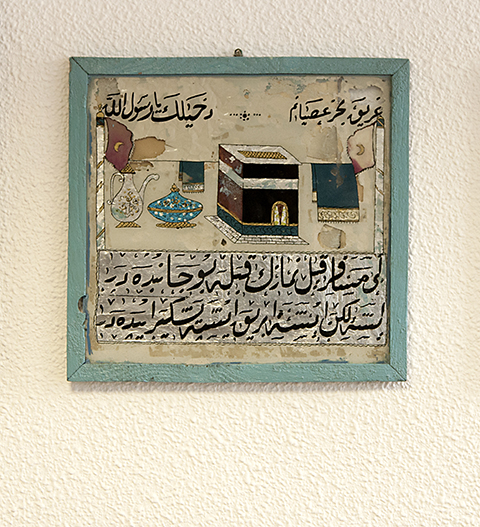
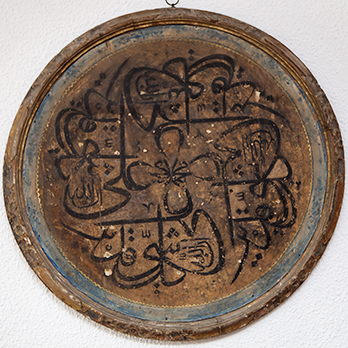

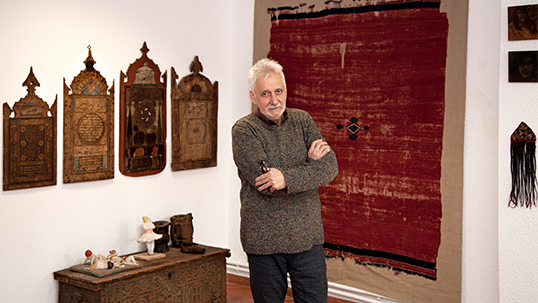
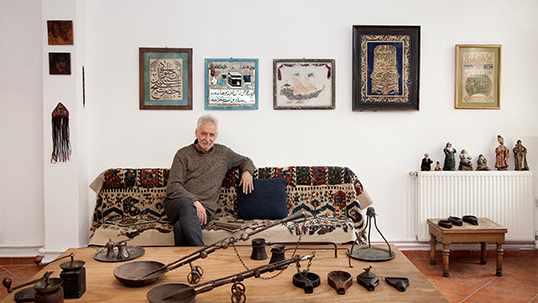
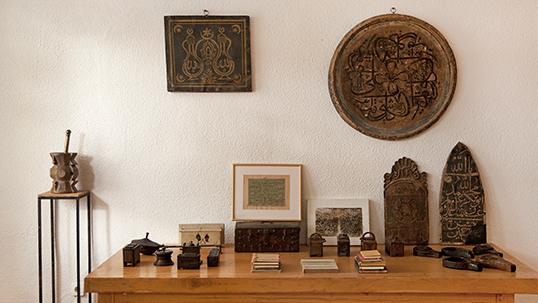
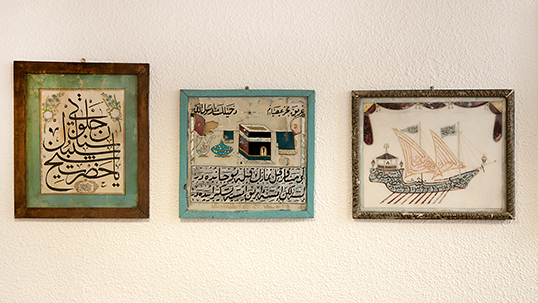
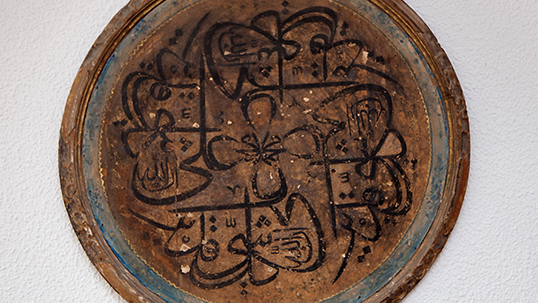
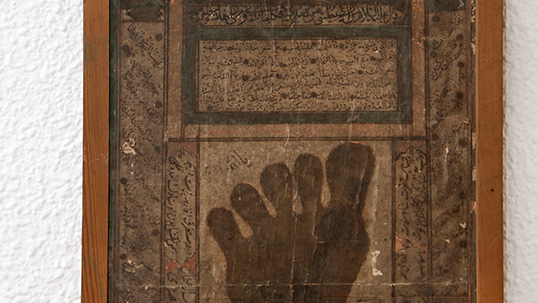
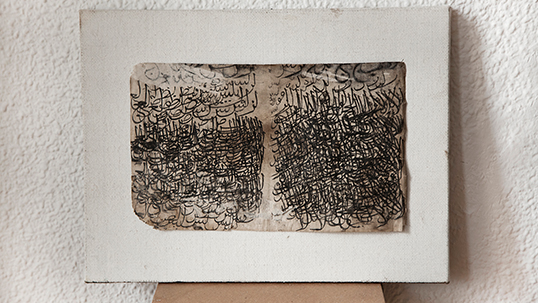
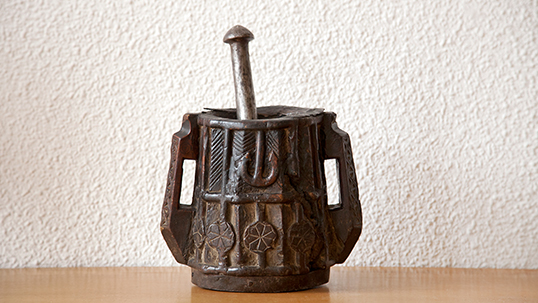
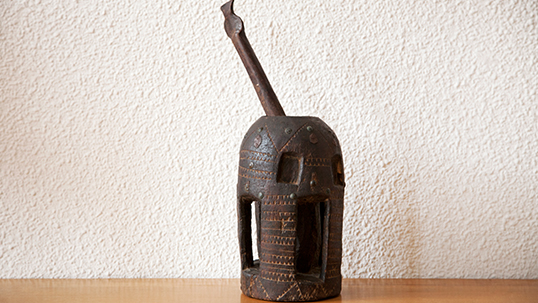
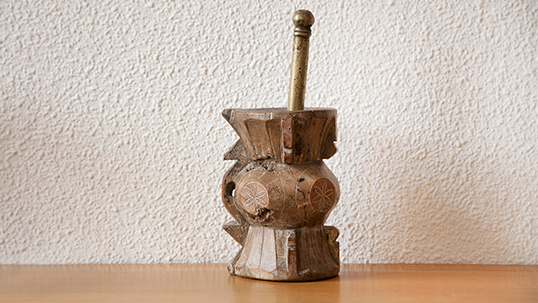
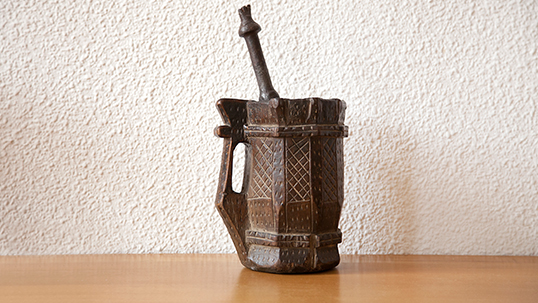
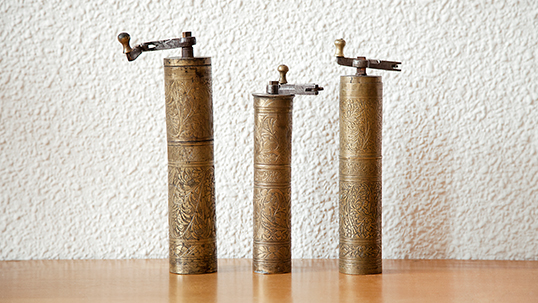
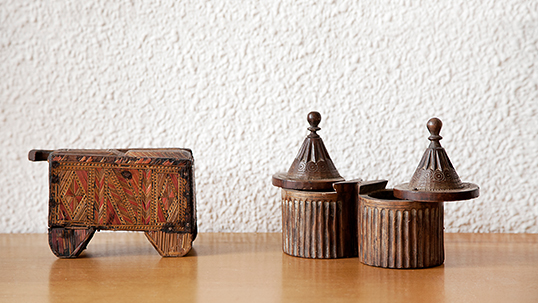
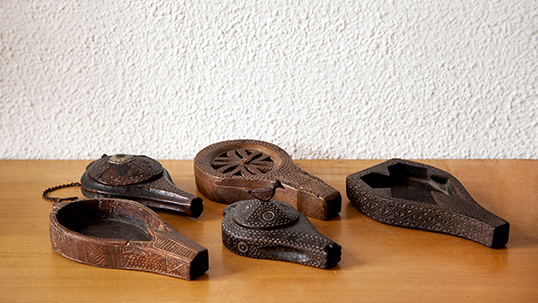
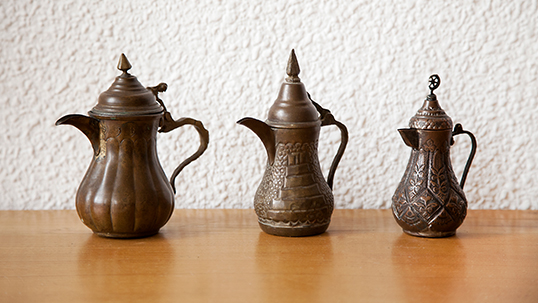
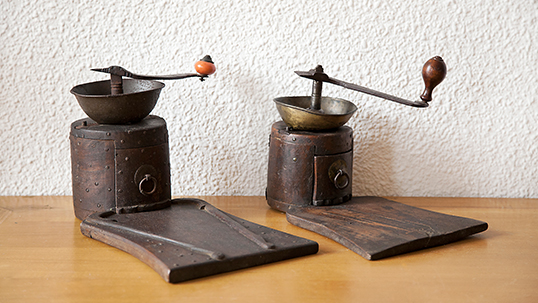
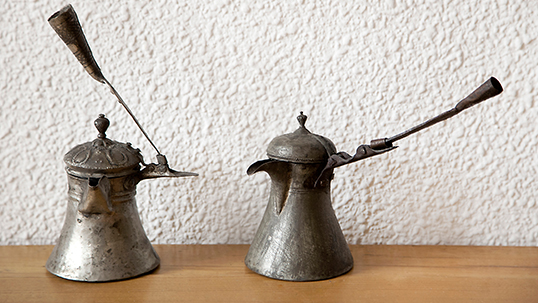
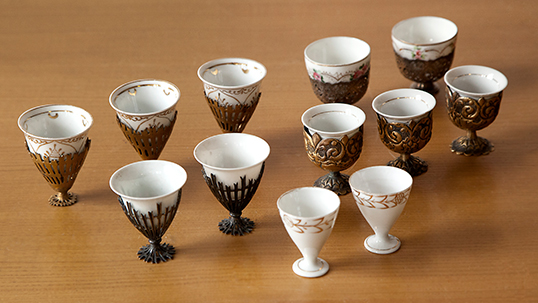
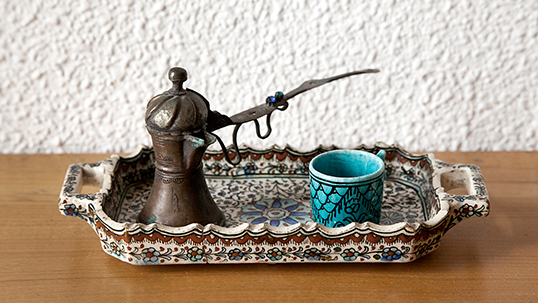
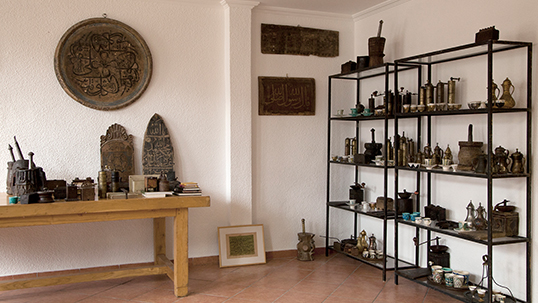



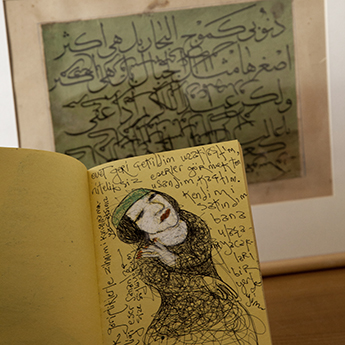

 UP
UP


